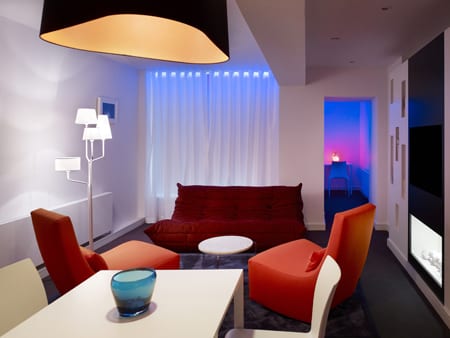Hospitality Design (HD) magazine and Culintro, a culinary trade organization in New York that brings together restaurant professionals, have teamed up to bring a monthly online Q&A with some of the nation’s top restaurant designers. Each month, we will feature a Q&A with an industry leader, talking about his/her newest project, the industry, what works, and what’s next.
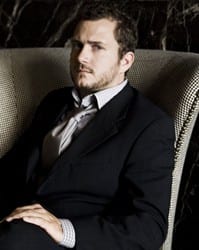 Robert Polacek
Robert Polacek
Puccini Group
San Francisco
From design and concept development to marketing, public relations, and operations management, the Puccini Group in San Francisco does it all for restaurants. Robert Polacek, chief creative officer and partner, heads up the design side of the company, and for the past eight years has helped the firm create countless of sophisticated, chef-tailored, noteworthy restaurants across the U.S. for clients like Kimpton and Strategic Hotels, with more planned for India, Dubai, and Orlando for Jumeirah and Fairmont, among others. A Rockwell Group alum, his success stems not only from his passion for the industry, but also his knowledge of the business side of restaurants, allowing his restaurants to do more than just look good. Here, he discusses making restaurants work, his fascination with food trucks, and the importance of social media.
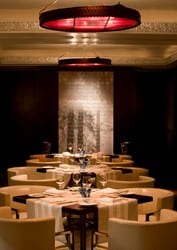 HD: What are some of your first memories of design?
HD: What are some of your first memories of design?
RP: My grandfather was a carpenter and a great home chef. My first memories of design come from the hours upon hours I spent with him in the workshop and kitchen. His talent along with his patience to share it with me has influenced my fascination with hospitality design from the beginning-specifically restaurant design. Mentoring and motivating the next generation of designers has become a commitment that I have made within my own career.
HD: What’s so great about designing restaurants?
RP: Restaurant design is much more than creating a beautiful space. It is about creating a total environment where guests can escape their own reality, if only for a moment. It’s creating that opportunity to escape and to enhance people’s enjoyment of life on a daily basis that most fascinates me about restaurant design versus other avenues of design. Restaurant designers have the pleasure of being able to take a basic human need-eating-and transform it into a cultural ritual and custom that makes every meal a celebration of the human spirit. All of the senses come into play and need to work together harmoniously to create an unforgettable environment to enjoy the ritual of eating.
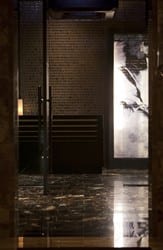 HD: Do you have a favorite place to start conceptualizing?
HD: Do you have a favorite place to start conceptualizing?
RP: All of our clients want to know how to create a concept that is going to work and is not just another pretty restaurant that loses money. We pride ourselves on creating restaurants that work. It is not a magic formula but a strategy based on common sense and a little research. I like to begin conceptualizing a new project by digging into to what is happening around us in society. While I draw inspiration from my surroundings-namely, photographs, smells, feelings, new experiences, etc.-I always look to the local market first when creating a concept. As designers we always want to push the envelope, but we’re not going to design something that the guests won’t appreciate or that will hinder any of the restaurants daily operations. I believe this philosophy helps create restaurants that become neighborhood destinations that encourage community building.
HD: What is your process like in your office when you are pitching/researching a project?
RP: We start by uncovering local market trends. From there we all gather around a table and create ‘feeling’ words that describe the type of concept we want to create. From there we pull inspirational imagery, menu ideas, music ideas that all drive our design efforts. I have a pin-up wall in my office that is open to any suggestions. An idea will start off and I watch it being added to and grow into this collaborative effort that the team has nurtured into a concept. It’s the best part of my job.
 HD: Hate to use the word trend, but what trend you are paying attention to?
HD: Hate to use the word trend, but what trend you are paying attention to?
RP: I have a current fascination with the food truck culture. It has really taken off, especially in San Francisco, and it proves that people are always searching for what ‘works.’ It isn’t always about seeing and being seen (although we all enjoy a little self indulgence); we like to go where we feel at home. There’s a trend now to design for that ‘third’ space, that place where you go that is neither work nor home, but that in-between.
HD: What’s the secret to a great client relationship?
RP: Communication and a shared vision-having the ability to see the final result of the collaboration with the same expectation. Great design has always come from good designer/client relationships that respect the talents in each other.
HD: What’s the most important thing to remember when designing a restaurant?
RP: The human scale. How people interact with each other and understanding personal space. We are most comfortable anywhere when we are comfortable with ourselves.
 HD: Inspiration for you comes from?
HD: Inspiration for you comes from?
RP: Experiencing my environment in a way that was not meant to be. ‘Seeing things’ in different ways to me means looking at everyday objects and thinking about other ways they can be used or how they were created and why (how many uses can you think of for your everyday toaster?). Everything in life can inspire. What most fascinates me most is how often it happens!
HD: Restaurants you love for their food?
RP: I think that chef-driven restaurants with the actual chef and team in the kitchen are the most honest establishments producing great food. In a lot of our designs we like to showcase the chefs in an open kitchen. Not only does it add to the experience with the aromas and ability to watch your meal being prepared, but it also adds life and activity to the space. It also builds on a more community-driven experience that is infiltrating everything in restaurants-locally sourced food, social media, Yelp, the list goes on. There’s a closer connection to the chefs and diners. To name one: Frances, San Francisco
 HD: Talk about a recent project you completed. What was the concept, solution, location, highlights?
HD: Talk about a recent project you completed. What was the concept, solution, location, highlights?
RP: I recently created a rooftop lounge and bar concept for a client who was converting an existing building into a hotel. The roof condition only allowed for very controlled views, but the building was low enough to capture peaks of the skyline around it. The first thing that came to mind while standing on the roof was à ciel ouvert Le Corbusier’s concept for the very eccentric-Charles de Beistegui in Paris. This location is similar in that you see iconic pieces of the city’s skyline poking out above the parapet walls. I played upon Le Corbusier’s concept of creating an outdoor room with no ceiling that played with the guest’s perception of space. A surrealist approach that was executed with great results in Paris, could be modernized to create an urban oasis where one experiences the feeling of being in two places at once-curled up by a fireplace in a cozy room and underneath the night’s sky in a garden.
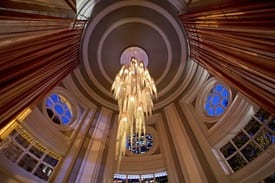 HD: What has been one of your most interesting or rewarding restaurant projects?
HD: What has been one of your most interesting or rewarding restaurant projects?
RP: We opened a restaurant in Atlanta called Livingston. It was a great success for a number of reasons: I had a great client that worked with us and trusted us; I had a great space to work with; our whole team collaborated on it (operations, marketing, design, purchasing); and the final product was one where everything came together beautifully and it still continues to be a success in that market.
HD: What projects are on the horizon?
RP: I am focusing this year on adapting social media into restaurant concepts and operations. Much like the music and retail industry, to be successful, hospitality needs to adjust the way it provides service to a culture that is changing the way it communicates and shares ideas.
.jpg) HD: What’s your dream project?
HD: What’s your dream project?
RP: Converting an old farm in Northern California into a weekend getaway/commune for my friends and family…complete with milking goats of course!
HD: Greatest lesson learned?
RP: Remembering that everybody in the room was at one time starting out for the first time and what they have to say is to be respected even if it’s in disagreement. You get what you give.
HD: Motto to live by?
RP: I prefer tap over bottled.
HD: City you are watching?
RP: Addis Ababa, Ethiopia
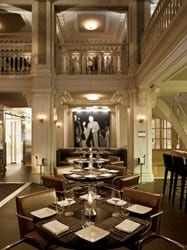 HD: What was your last great work trip and why?
HD: What was your last great work trip and why?
RP: I recently took a detour through Beirut on a trip home from Dubai this past year. Growing up in the ’80s I was fascinated with the Middle East, specifically Lebanon. I remember my parents telling me that it was the Paris of the Middle East where the cultural elite summoned. My favorite experience of the new Lebanon was exploring the dining and nightlife scene and understanding how it plays an important role in its burgeoning cultural landscape.
HD: When you are not at work, where can we find you?
RP: Where else? Out with my San Francisco family, dining, drinking, and enjoying all of the amazing restaurants and social spaces that this city has to offer.
Pictured clockwise from upper left: Robert Polacek; Fifth Floor, Hotel Palomar, San Francisco; Sable Kitchen + Bar, Hotel Palomar, Chicago (three photos); Livingston Restaurant & Bar at the Georgian Terrace Hotel, Atlanta (four photos)

